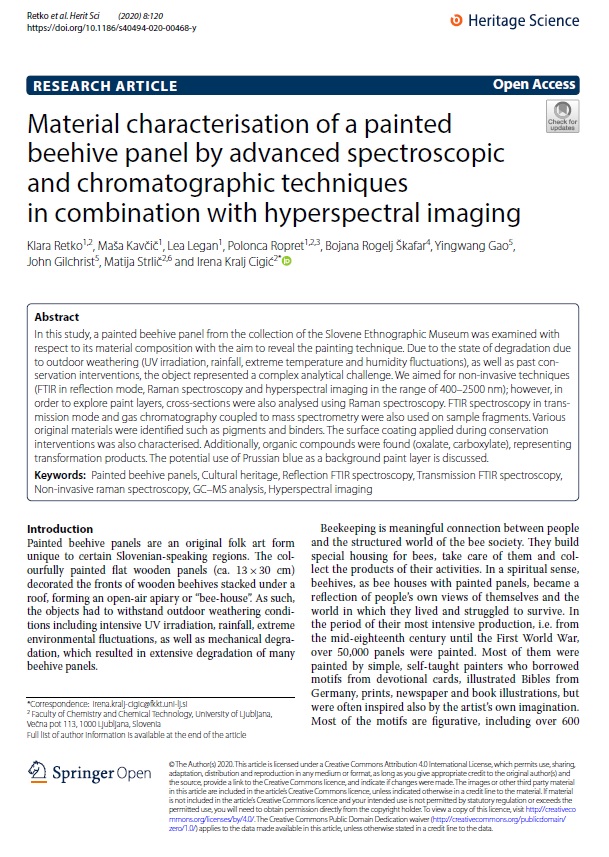Researchers from the Institute for the Protection of Cultural Heritage of Slovenia, Faculty of Chemistry and Chemical Technology of the University of Ljubljana, Slovenian Ethnographic Museum and Clyde Hyperspectral Imaging & Technology published the paper »Material characterisation of a painted beehive panel by advanced spectroscopic and chromatographic techniques in combination with hyperspectral imaging«.
Painted beehive panels are an original folk art form unique to certain Slovenian-speaking regions. The colourfully painted flat wooden panels decorated the fronts of wooden beehives stacked under a roof, forming an open-air apiary or “bee-house”. As such, the objects had to withstand outdoor weathering conditions including intensive UV irradiation, rainfall, extreme environmental fluctuations, as well as mechanical degradation, which resulted in extensive degradation of many beehive panels.
In this study, a painted beehive panel from the collection of the Slovene Ethnographic Museum was examined with respect to its material composition with the aim to reveal the painting technique. Due to the state of degradation, as well as past conservation interventions, the object represented a complex analytical challenge. We aimed for non-invasive techniques (FTIR in reflection mode, Raman spectroscopy and hyperspectral imaging); however, in order to explore paint layers, cross-sections were also analysed using Raman spectroscopy. FTIR spectroscopy in transmission mode and gas chromatography coupled to mass spectrometry were also used on sample fragments.
This study represents a comprehensive material study of a painted beehive panel and will serve as the blueprint for further analysis of objects in the extensive collections of such panels in Slovenian museums, with the aim to develop a procedure for condition evaluation. Based on this, preventive conservation strategies and storage recommendations could be developed in the future.

